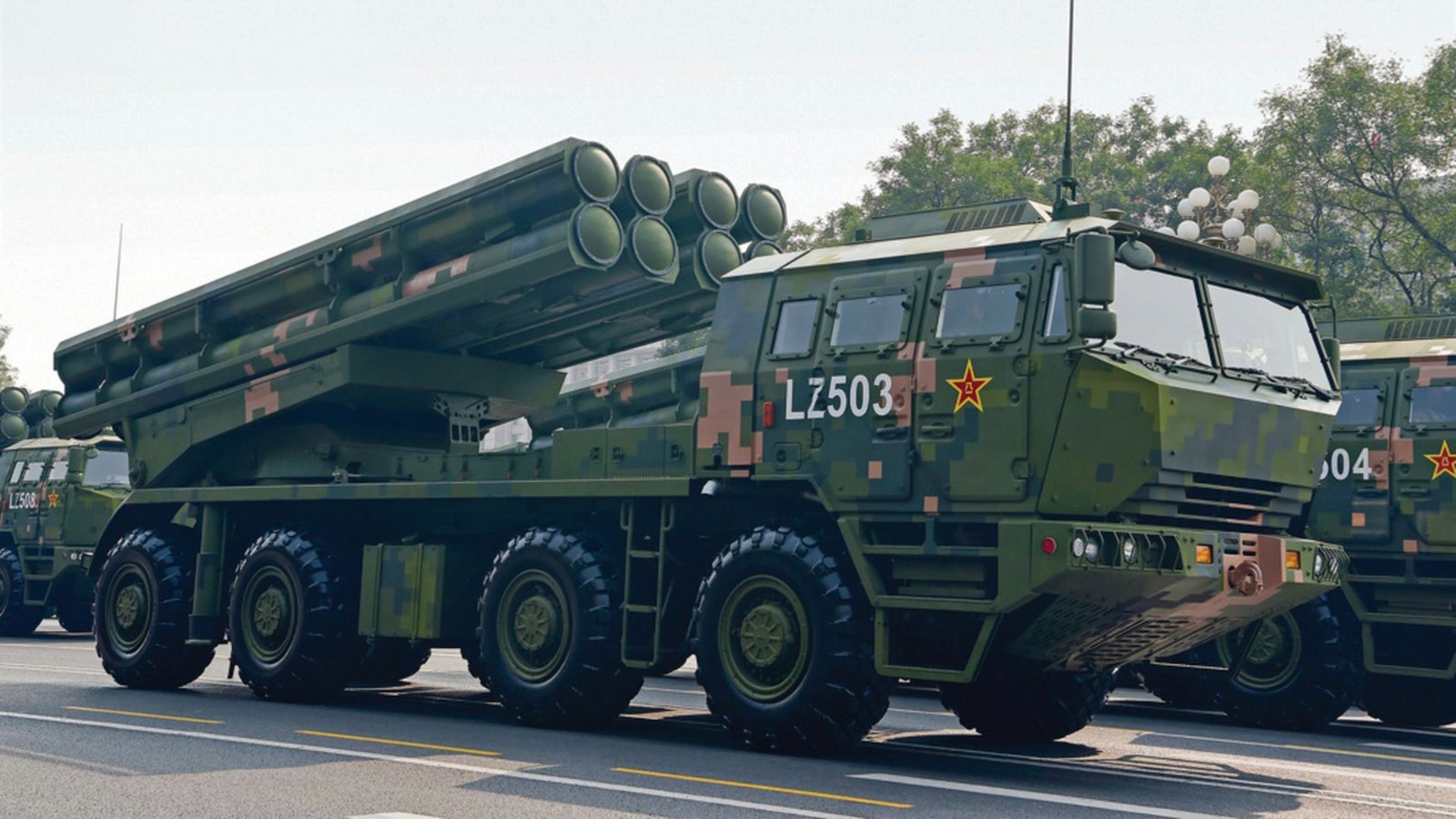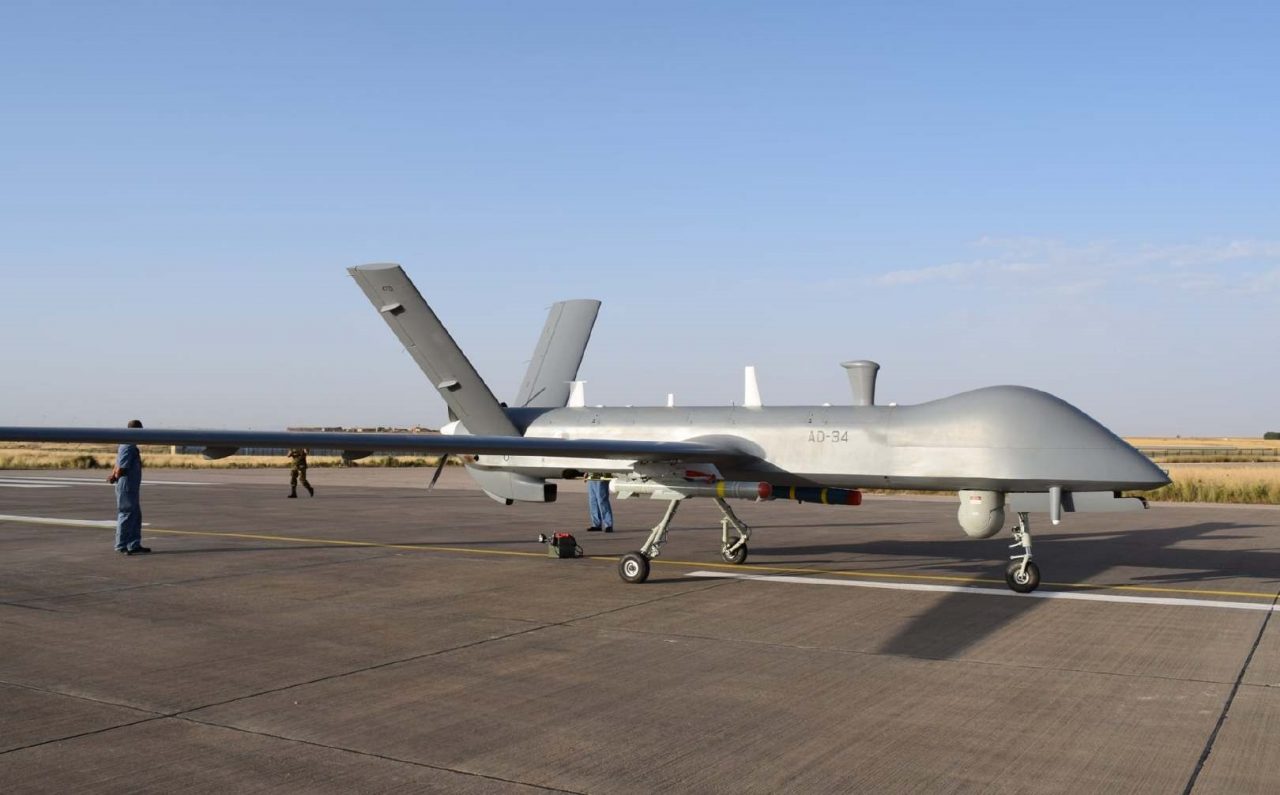China’s key weapon in seizing Taiwan could be an ‘ordinary’ Multiple Rocket Launch System (MLRS), the PHL-16/PCL-191. The tube rocket artillery platform can fire guided and unguided rockets with diverse warheads and complement other sister services by long-range tactical firing on the sea, coastal, land, and deep inland targets that unburdens them of the role.
With ranges between 70 km and 300 km, the rockets cover the entire distance of the Taiwan Strait from the Chinese shore of 150 km and the full breadth of the island.
Moreover, its units with the People’s Liberation Army (PLA) also have their own reconnaissance-strike unmanned aerial vehicle (UAV) squadron for surveillance and target engagement, allowing them to act independently without straining drone resources.
Army Needs Pre-Landing Target Softening
This assessment of the weapon’s tremendous utility was done in a dedicated report on the MLRS platform by the China Maritime Studies Institute (CMSI) of the US Naval War College.
The massive study analyzes the weapon’s development history, comparisons with other rocket artillery systems, and the PLA’s tactical and theoretical doctrine behind its employment.
Developed by the China North Industries Corporation (NORINCO) and introduced in late 2019, the PHL-16 came to prominence in late July 2022, before and after the August 1 visit of former US Speaker Nancy Pelosi to Taiwan.
Among the many unprecedented firsts that the retaliatory live-fire exercises marked was the firing of rockets over the island from the Chinese mainland that fell into Taiwan’s eastern seas.
The People’s Liberation Army (PLA) “had limited capabilities to affect the battlefield before landing,” the report said, pointing to how the ground force would need a lot of pre-landing target softening before it begins disembarking on Taiwan’s beaches.

Upon landing, armor and infantry would have to “rely heavily on the joint services to protect their troops on the beaches and in-depth because it lacked the organic weapons to execute those fire support missions.” The range and precision of the PCH191 now allow the PLA to execute these missions out to ranges nearing 500 kilometers quickly.
Take The Load Off Air Force, Navy & Rocket Force
Even the People’s Liberation Army Air Force (PLAAF) and the People’s Liberation Army Navy (PLAN) benefit since the PHL-16 can strike air defense sites, coastal anti-ship gun and missile installations, sea surface targets, air bases, and naval bases in Taiwan.
“With the continued fielding of the PCH191, the Army is moving from simply the main ground force in a Taiwan campaign to potentially the primary contributor of tactical fires on the island,” said the report. Moreover, these MLRS systems being attached to the PLA as organic units also spare the PLA Rocket Forces (PLARF) resources from having to support it.
The PHL-16 can provide precision fires for ground forces “while also integrating with PLAN, PLAAF, and PLARF units as part of a joint fire strike.” For instance, a PHL-16 equipped with two TL-7B anti-ship missiles with a 320 kg warhead and a 180 km range, “can conduct sea skimming flights and can strike medium to large surface vessels like destroyers, frigates, and supply ships.”
This frees up other airborne anti-ship platforms like the JH-7A strike jet, the Su-30MKK fighter, or even PLAN warships that fully concentrate on keeping air clear for other PLAAF fighters.

Its 370 mm guided rockets and 750 mm tactical missiles can hit strategic targets across Taiwan from locations 70 to 130 km from the PRC coastline. Such vast distances between the firing point and the target also complicate an adversary’s efforts for counter-battery fire by trying to trace a projectile back to its launcher.
Invincible When Combined With CH-4 UAV
But combined with UAVs like the CH-4 reconnaissance-strike drone with an endurance of 40 hours, it allows the PHL-16 units to both acquire, engage targets, and conduct post-strike damage assessments.
This is particularly essential while undertaking long-range strikes that are always deep in the enemy rear areas, away from the ‘line of sight.’ Conventional reconnaissance and surveillance methods “enable” acquiring and engaging targets within visual range.
“A battalion in a certain Eastern Theater Army brigade, almost certainly the Intelligence and Reconnaissance Brigade, now fielded the CH-4 UAS,” the report said. The CH-4 also figures as a part of the aircraft and UAVs sent into its Air Defense Identification Zone (ADIZ).
On November 2, it was a part of 39 aircraft, 20 of which crossed Taiwan’s ‘median line.’*//Other aircraft included the BZK-005 reconnaissance UAV, Su-30, J-10, J-11, J-16 jets, K-200 ASW aircraft, Y-9 electronic warfare plane, H-6K bombers, and KJ-500 Airborne Early Warning (AEW) plane. Images of flight paths released by Taiwan’s Ministry of Defense (MND) showed the CH-4 turning back just after crossing the far northwestern part of the median line.
- The author can be reached at satamp@gmail.com
- Follow EurAsian Times on Google News




